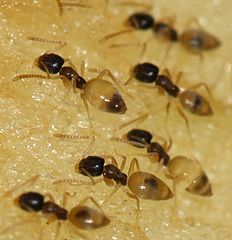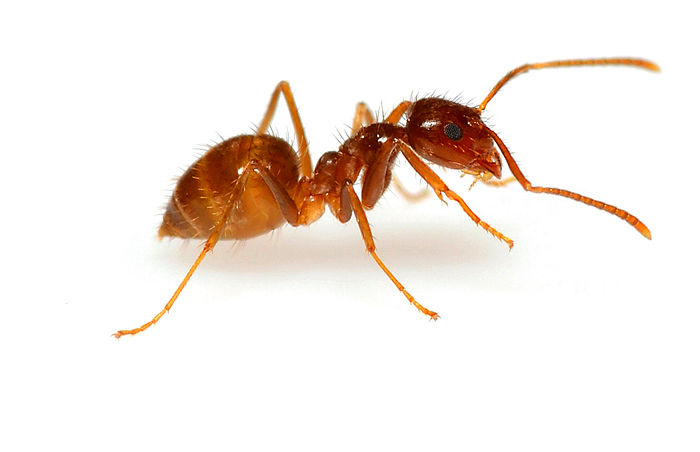
All about Ants In Singapore
A tale as old as time, set in a sunny island by the sea
What are the signs of Ants?
Presence
About
They can enter your home in various ways. From outdoor or brought in. They can look so harmless. You see them crawling around and think nothing much of it. However, before you know it, there are everywhere. Most times, people only take notice of them once it is too late. Try leaving an unattended food on the table for 5 mins and you see them start feeding on it. When this happens, you know that you have a serious pest issue on hand. The kitchen is where it is most common to find them as that is the where the food source is abundant for them. However, the moment you start seeing them in the rooms, we can safely determine that the colony is getting bigger and that more sub nest need to be built to accommodate the infestation.
They can enter your home in various ways. From outdoor or brought in. They can look so harmless. You see them crawling around and think nothing much of it. However, before you know it, there are everywhere. Most times, people only take notice of them once it is too late. Try leaving an unattended food on the table for 5 mins and you see them start feeding on it. When this happens, you know that you have a serious pest issue on hand. The kitchen is where it is most common to find them as that is the where the food source is abundant for them. However, the moment you start seeing them in the rooms, we can safely determine that the colony is getting bigger and that more sub nest need to be built to accommodate the infestation.
Prevention
- Eliminate access to food sources - Clean countertops with soap regularly. - Contact us
- Eliminate access to food sources - Clean countertops with soap regularly. - Contact us
Trail
About
Ants lay down pheromone trails that enable others to follow them to any food source and back to the nest. A large number of them can be seen working tirelessly bring the food back to the nest.
Ants lay down pheromone trails that enable others to follow them to any food source and back to the nest. A large number of them can be seen working tirelessly bring the food back to the nest.
Prevention
- Clean trails with soap to remove scents trails - Contact us
- Clean trails with soap to remove scents trails - Contact us
Live Presence
About
You start seeing large number of live ants. Leaving an unattended food is not possible anymore.
You start seeing large number of live ants. Leaving an unattended food is not possible anymore.
Prevention
- Replace lids and covers of containers.
- For simple cases, use an OTC pest spray. If that does not work,
- Contact us
- Replace lids and covers of containers. - For simple cases, use an OTC pest spray. If that does not work, - Contact us
Nest
About
Indoor, you can find them living in any crack or crevices while outdoor, they can be found in a small pile of soil or damaged wood. A common nest found outdoor would be a fire ant nest.
Indoor, you can find them living in any crack or crevices while outdoor, they can be found in a small pile of soil or damaged wood. A common nest found outdoor would be a fire ant nest.
Prevention
- DO NOT DISTURB THE NEST!!! - Contact us immediately
- DO NOT DISTURB THE NEST!!! - Contact us immediately
Bite
About
Not all will bite but when they do, they can cause an allergic reaction. The fire ants sting is one of the most common bites that you can encounter. They will also attack in groups.
Not all will bite but when they do, they can cause an allergic reaction. The fire ants sting is one of the most common bites that you can encounter. They will also attack in groups.
Prevention
- Use calamine lotion on the bite - Traditional "sinseh" bite creams work for some - Run warm water over the wound.
- Use calamine lotion on the bite - Traditional "sinseh" bite creams work for some - Run warm water over the wound.
What attracts Ants?
Food Sources
Almost any food that is good for you and your family will likely serve as an excellent source of nourishment to ants as well. Ants are attracted to most types of human food, but they are especially fond of sweet foods. Many types of ants are drawn to jelly, syrup, honey, candy, and other rich sources of sugar. Many households have areas within their pantry or on their countertops where products such as these get spilled, leaving a tempting source of food for ants to find. Once one or two ants stumble upon this tasty treat, they will leave behind a scent trail to attract the rest of the colony, and you will soon have a huge infestation.
Water Or Moisture
Just as they can't live without a good source of food, ants also need a water source to survive. Ants do not drink just to quench their immediate thirst. They also take water back to their colony to store it for future use. Therefore, when they find a good source of water, they will leave a scent trail to attract other ants, and they will all keep coming back for more. Broken pipes, roof leaks, potted plants, and even accumulated condensation can all be sources of moisture that are attractive to nearby ants. Opening a window or running a fan in the bathroom can help prevent a buildup of excess moisture that can attract ants.
Plants
While most types of ants don't necessarily eat houseplants, this doesn't mean they aren't attracted to them for a variety of reasons. Insects including ants are naturally drawn to flowers due to their sweet fragrances. Additionally, flowers and plants are usually damp and provide a coveted source of moisture for curious ants. Other pests that are attracted to indoor plants, such as aphids, can also leave behind residues that are attractive to ants. While the ants are not likely to use your indoor flowers and plants as a source of food, they can cause damage that can negatively affect the plant's health and lifespan.
Common Ant Species
Weaver Ant
AntsDiet:
Appearance:
No larger than 4cm. Most are below 1cm. They have arrow waists, bulbous abdomens and elbowed antennae
Disease Vectors:

Ghost Ant
AntsDiet:
Appearance:
No larger than 4cm. Most are below 1cm. They have arrow waists, bulbous abdomens and elbowed antennae
Disease Vectors:

Pharaoh Ant
AntsDiet:
Appearance:
No larger than 4cm. Most are below 1cm. They have arrow waists, bulbous abdomens and elbowed antennae
Disease Vectors:

Crazy Ant
AntsDiet:
Appearance:
No larger than 4cm. Most are below 1cm. They have arrow waists, bulbous abdomens and elbowed antennae
Disease Vectors:

Carpenter Ant
AntsDiet:
Appearance:
No larger than 4cm. Most are below 1cm. They have arrow waists, bulbous abdomens and elbowed antennae
Disease Vectors:
Do Ants cause diseases?
Some ants have the ability to harbor and subsequently transfer pathogenic or toxigenic microorganisms, ants may act as disease vectors and contaminate food, water and food- contact surfaces of kitchens resulting in foodborne illnesses
Where do Ants hangout?
Larvae
They live underground, in dead wood or sometimes in plant cavities. In Singapore however, common ants can easily be found in an apartment. It will start by infesting your kitchen and bathroom. The kitchen, for obvious reason, as it is where the main food source can be found. They will look for crack and crevices and wall voids to start a sub nest. Don't be surprised if they are many sub nests in your kitchen! The parent colony though can sometimes be found outside the house. Their nest look like a pile of soil. It is called an anthill. It is normally on the ground and a clear indication that the queen is nearby.
Social
They are social insects, which means they live in large colonies or groups. Depending on the species, the colonies can consist of millions of ants. There are three kinds of groups in a colony: The queen, the female workers, and males. The queen and the males have wings, while the workers don't have wings. The queen is the only one that can lay eggs. The male ant's job is to mate with future queen ants and they do not live very long afterwards. Once the queen grows to adulthood, she spends the rest of her life laying eggs! Depending on the species, a colony may have one queen or many queens.
Reproduction
The workers tend to the colony's offspring. Even rescuing the pupae should the nest be disturbed. They are selfless and will even sacrifice their own food for the well being of the colony. Their colony divide labour between workers, queen and male reproductives. The all-female workforce will gather food, constructs the nest and keeps the colony clean.
Defense
The colonies also have soldiers that protect the queen, defend the colony, gather or kill food, and attack enemy colonies in search for food and nesting space. If they defeat another colony, they take away eggs of the defeated colony. When the eggs hatch, the new ants become the “slave” ants for the colony. Do you know that Ants are actually termite natural predators?
lifecycle
They go through 4 different stages from the eggs to larva, pupae and finally an adult. The larvae are white and legless and look like maggots. They will undergo repeated moulting as it grows. Eventually, a cocoon will cover the pupae during its metamorphose period to an adult. The complete process may take from 6 weeks to 2 months. They can live for about 90 days although depending on the species, though for some can go for as long as 6 months to a year. The queen can control the sex of her offspring by choosing to fertilise the eggs with sperm. All fertilise eggs and pupae that are well-nurtured, can become the next queen. Fertilised eggs always produce females while unfertilised eggs produce males. The workers ants which will make out entirely of female. The larvae are completely dependent on the workers for their care. The workers feed the larvae with regurgitated food.
Ant Egg
Eggs of weaver ants (known in Thailand as red ants) eaten in several countries across Southeast Asia, especially Laos and Northeastern Thailand (Isan). They are high in protein and enjoyed for their sourness and pop when eaten along with soups, omelets, and salads.
Ant Larvae
Ant Pupae
Ant
Pests We Control
Ok. We don't actually control these pests. But we are damn good at managing them and creating harmony in your enviroment.





